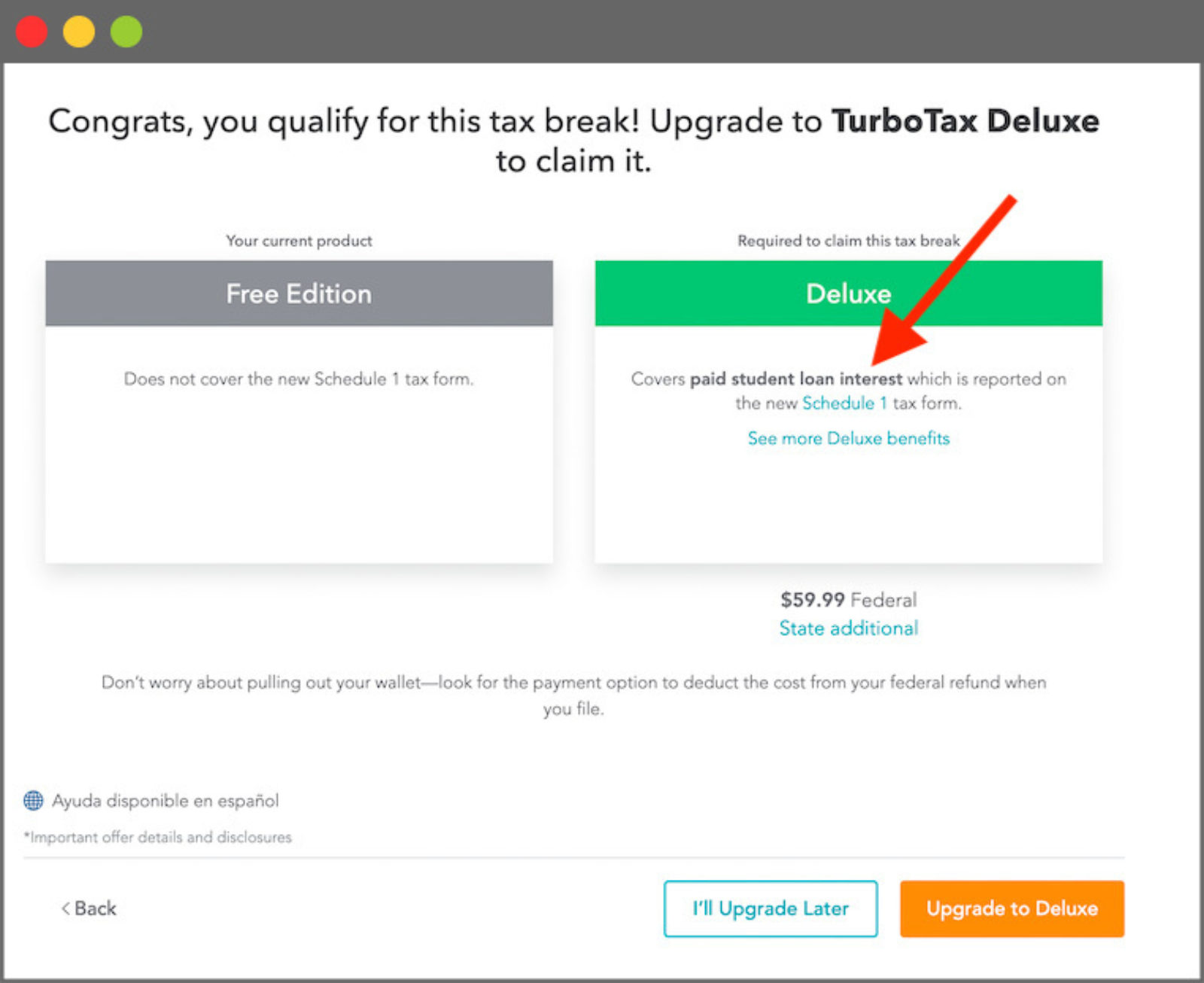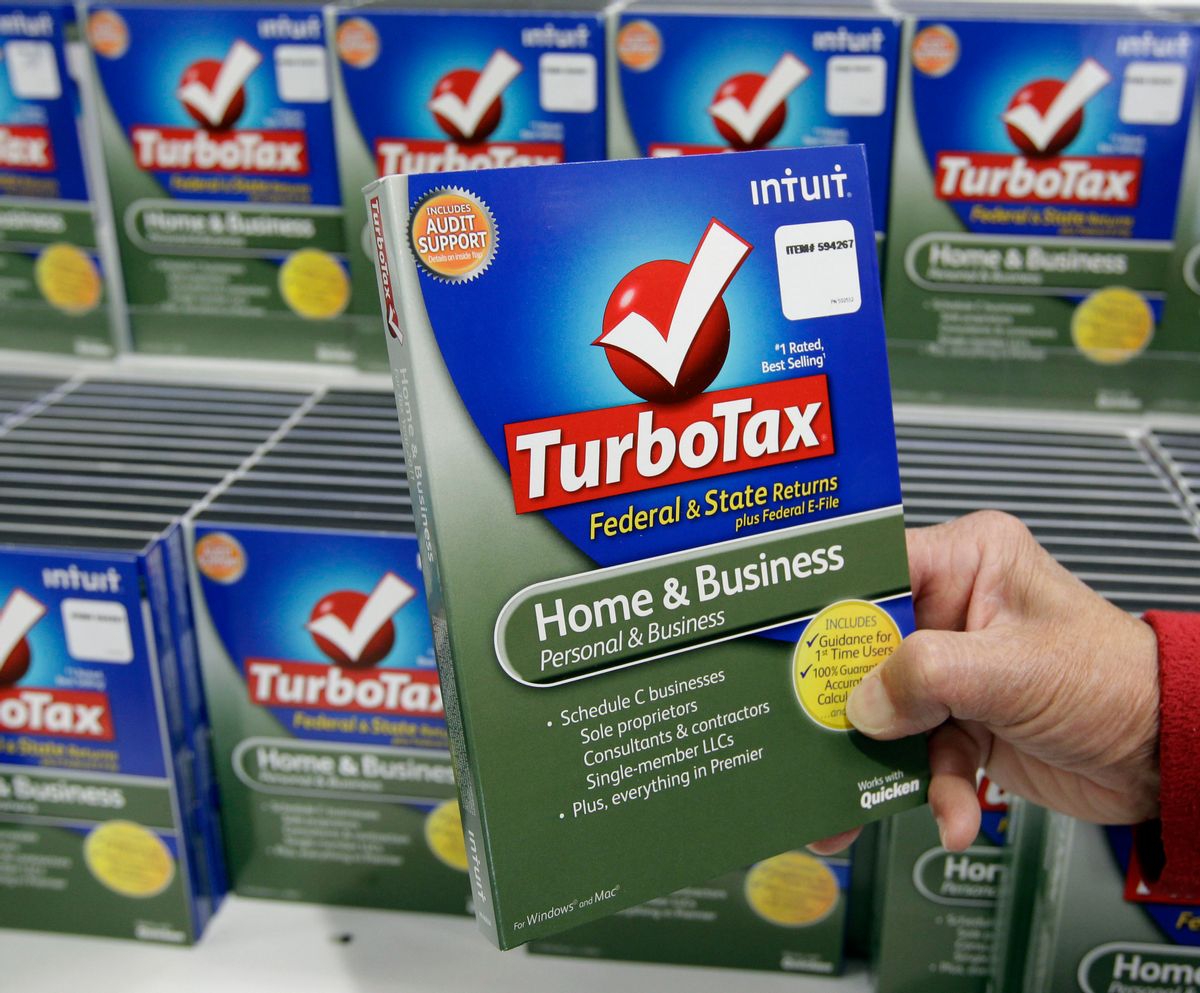The 2017 tax overhaul vastly expanded the number of people who could file simplified tax returns, a boon to millions of Americans.
But the new law directly threatened the lucrative business of Intuit, the maker of TurboTax.
Although the company draws in customers with the promise of a “free” product, its fortunes depend on getting as many customers as possible to pay. It had been regularly charging $100 or more for returns that included itemized deductions for mortgage interest and charitable donations. Under the new law, many wealthier taxpayers would no longer be filing that form, qualifying them to use the company’s free software.
Intuit executives came up with a way to preserve the company’s hefty profit margins: It began charging more low-income people. Which ones? Individuals with disabilities, the unemployed and people who owe money on student loans, all of whom use tax forms that TurboTax previously included for free. The shift was described to ProPublica by two people familiar with the process.
The strategy worked well for the company. In May, it announced that its TurboTax unit had grown quarterly revenue by 10%, to $2.2 billion, despite the new tax law.
Intuit CEO Sasan Goodarzi obliquely alluded to the strategy on a call with Wall Street analysts, saying the “tuned product lineup, adjusted for the new tax legislation” helped the company bring in more money. He presented the move as good for taxpayers.
“We needed to change our lineup this year to ensure that we delivered for customers, given the tax code changes,” Goodarzi said. He told investors: “We are big supporters of tax simplification. We believe that it enables consumers to take more control over their financial life.”
An Intuit spokesman declined to answer detailed questions about the changes, but said in a statement, “More taxpayers filed their taxes last year with TurboTax and paid absolutely nothing than any other year.” He also said the “completely free customer group” grew at a faster rate than TurboTax as a whole. The spokesman declined to break down numbers or comment on specific cases.
Under a 2002 deal with the government, most Americans are supposed to be able to file their taxes for free as long as they make under $66,000 a year. In return, the IRS has agreed not to offer its own free service.
But, as ProPublica has been reporting, Intuit has steered eligible customers away from the truly free version, aggressively marketing products that are called “free” even though many customers end up paying. For an outsider, Intuit’s lineup of products is dizzying. The company’s commercial ecosystem includes four price tiers: Free Edition, Deluxe, Premier and Self-Employed. The goal, according to former employees, is to draw in people with the promise of “free” and then get them to pay. Some pay because they have to file extra forms. Some pay for ancillary services.
Because the new law almost doubled the standard deduction, Intuit faced a loss of users of its Deluxe edition. Most of the millions of Americans who would no longer be itemizing their deductions are relatively affluent — making more than $75,000 a year — but they would now potentially be eligible to use the Free Edition.
In response, the company bumped a number of forms typically used by lower-income filers, which were previously available in the Free Edition, into paying editions. “They were always supposed to be customer focused, customer first,” one former staffer said. But the income levels of the groups that were being driven to paid products “was never really considered.”
Thirty TurboTax customers told ProPublica that they were charged as a result of needing to use one of the forms that used to be free.

A screenshot showing how TurboTax users are directed to the deluxe, paid version. By accepting the Deluxe version, student Kristan Obeng ended up saving $26 on her taxes — at a cost of $151.
One of these forms was for a tax credit that goes exclusively to poor taxpayers who are elderly or get disability benefits. Another is used by low- to middle-income households that receive a credit for putting money in a retirement account. A third is used by taxpayers who collected unemployment benefits.
One large affected group was current and former students. They are now prompted to upgrade to the Deluxe edition after entering information from basic documents, such as the one that shows tuition costs. And then there are people with student loans, who also have to use Deluxe. Last year, more than 5 million taxpayers in the United States with income below $50,000 claimed the student loan interest deduction.
The company’s changes also affected parents who get a credit for child care expenses, as well as people filing the schedule for interest and dividends. Those likely represent a smaller part of TurboTax’s users because its customer base skews lower income, former employees said.
Last April, Kristan Obeng, then a student pursuing a master’s degree at the University of Arizona, was running out of time to file her taxes as the semester chugged to an end. So she Googled and soon was on TurboTax’s website, which promised she could file for “Free Guaranteed.” She didn’t realize it, but she was now in Intuit’s paid ecosystem. She was using the “Free Edition.” Starting there, some customers still file for free but many need tax forms that push them into paid products.
Her financial details weren’t complicated. She’d made just over $12,000 at her job as a graduate teaching assistant. She had student loans. She was in school. That was it. After she began filling in her details on TurboTax, she got some good news. “Congrats, you qualify for a tax break!” the site said. But there was a catch. She would have to “upgrade to TurboTax Deluxe to claim it.”
When Intuit had cut the list of forms covered by TurboTax’s Free Edition in response to the Trump tax overhaul, it had removed Form 1098-E. The form is a statement prepared by companies that handle student loan payments. It shows how much interest the borrower paid that year. To file Obeng’s taxes, TurboTax would not even need the form itself, but it would list a single number, the amount of interest paid, on Schedule 1 of the main tax form, the 1040.
That number, it turned out, would cost Obeng $60. Add TurboTax’s charge for state returns, and Obeng owed the company $111. On top of that, she was charged an additional $40 because she opted to pay the TurboTax fee out of her refund, rather than upfront. (If she had been able to file for free, there would have been no need to deduct any fees from her refund.)
In all, she ended up paying $151.
Although she didn’t realize it at the time, that $151 dwarfed the “tax break” TurboTax had prompted her to claim. The student loan interest deduction had only cut her taxes by $26.
Obeng said she was irritated at having to pay for something she thought was going to be free. And she became angry when she read ProPublica’s reporting about how Intuit had hidden access to the program it conducted under the deal with the IRS, which is called “Free File.” The qualifications for that program were income-based, and her income had been well below the level to qualify. So she called up Intuit and asked for her money back.
Like many other ProPublica readers, Obeng was denied a refund. She’d started in TurboTax’s Free Edition, not Free File, and she’d been charged because student loan interest wasn’t covered in the Free Edition, the Intuit representative told her.
“And was this always the case or did you add this recently?” Obeng asked.
“I believe this was always the case,” the Intuit representative said. But that is not accurate. The 1098-E form was free until this year.
The changes also affected Americans who got unemployment benefits. That’s what pushed John Symonds of Connecticut into the Deluxe edition. TurboTax charged him $106 to file his federal and state returns. He opted to use his refund to pay that fee, but when the refund didn’t come through, Intuit attempted to take the money from his bank account.
He didn’t have $100 in his account, he told ProPublica, and, since he’d turned to driving for Uber after being laid off, he needed what money was in his account to pay for gas. He called his bank and stopped the transaction. “I wouldn’t have been able to continue working,” he said.
Inside TurboTax headquarters in San Diego, in the spring and summer of 2018, marketing staffers came up with several options for how the company could change the forms it offered in its free and paid products, according to two former staffers.
Throughout 2018, Intuit executives assured Wall Street analysts that they had a plan to address the risk that fewer people would have to use a form that the company charged for.
It’s “something that we’re very aware of,” Greg Johnson, the head of Intuit’s TurboTax unit, told investors in September 2018. “And the fact that we’re aware of it allows us to experiment, it allows us to get closer to customers and find out strategies around how we’re going to address that.”
Intuit analysts mined the company’s vast store of customer and tax return data to project how much revenue would be gained if a particular tax form was moved from the Free Edition to one of the paid editions, the former staffers said.
The change confronting Intuit was seismic. Recent IRS statistics show that, compared with last year, 26 million fewer taxpayers itemized their deductions this year. “When you do the market analysis and you realize how much revenue you’re going to potentially lose, they have to make changes,” one of the former staffers said.
Executives were nervous that the changes the company was experimenting with could backfire. In 2015, after Intuit required some users of TurboTax’s desktop version to pay to file previously included tax forms, customers revolted. In response to the backlash, the company reversed the changes, apologized and gave back $25. “I deeply regret the anger and distress we have caused those of you affected by this,” said Goodarzi, TurboTax chief at the time.
Despite those concerns, Intuit’s leaders decided in 2018 to remove several forms from its Free Edition.
Internal company estimates suggested that as many as 30% of users who had been eligible for the Free Edition would be bumped into a paid product, one of the former staffers said. The Intuit spokesman didn’t respond to a question about the number.
Last December, the company issued a press release announcing its Free Edition for the 2019 filing season — “TurboTax Free Edition. Free Federal. Free State. Free To File.” It highlighted seven features of the product, including one allowing customers to import relevant data from last year’s tax return to this year’s, which had previously been part of a paid add-on bundle.
It did not disclose that people with student loans, the unemployed and others would no longer be able to use Free Edition.
On the company’s website, the only changes were subtle. Whereas last year, when the site had trumpeted that “60 million hard-working Americans” were eligible to file for free with TurboTax, this year, that number dropped to 50 million.
Reporting and research contributed by Ariana Tobin and Doris Burke.



Shares